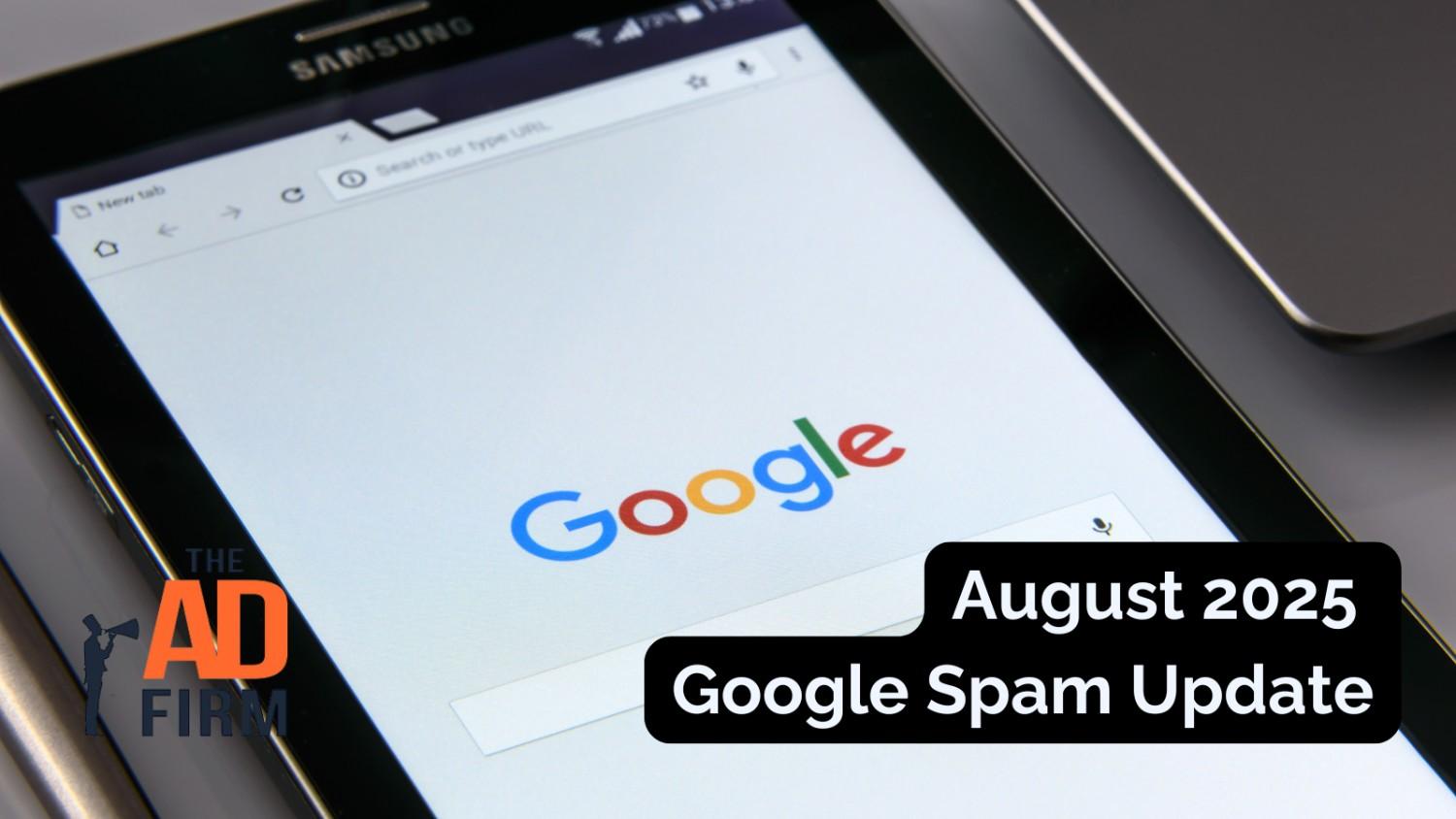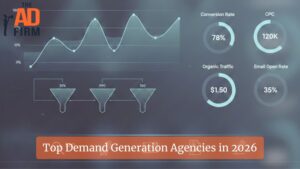Many businesses struggle with sudden drops in rankings, unpredictable traffic patterns, and unexplained changes in visibility. These challenges often leave site owners unsure of what went wrong or how to respond. This is where updates from Google play a key role in shaping performance.
The August 2025 Google Spam Update is one of those algorithm updates that brought vast changes across industries. It affected both established websites and smaller ones competing for visibility.
In this blog, we’ll learn everything about the August 2025 Google Spam Update and how a trusted SEO company can help businesses adapt to ever-changing search landscapes.
Understanding the timing, scale, and focus of the update is the first step to navigating its impact. With clear insight, site owners can evaluate their performance and plan effective strategies.
Let’s break down what happened and what it means moving forward.
Quick Overview of August 2025 Google Spam Update
The August 2025 Google Spam Update was a broad algorithm adjustment aimed at improving search quality. It ran from late August until late September and impacted websites worldwide. Google confirmed this was a general spam update, not tied to one specific type of violation.
Key highlights include:
- Rollout began on August 26, 2025, and ended on September 22, 2025.
- It lasted nearly four weeks, longer than many previous spam updates.
- The update was global, covering all languages and regions.
- The impact was immediate, with some sites experiencing changes within 24 hours.
- Recovery opportunities were noted for websites previously affected by earlier spam updates.
This algorithm update reinforced Google’s commitment to keeping search results useful and reliable. While some websites faced significant declines, others saw gains as outdated penalties lifted.
For anyone monitoring their site performance, the August 2025 spam-related algorithm update served as a reminder to stay aligned with Google’s evolving standards.
The Rollout Period and Implementation Process
Google’s August 2025 spam update wasn’t a quick, overnight shift. It unfolded over several weeks, with noticeable changes hitting at different stages. The rollout showed a pattern of initial disruption, a second wave of adjustments, and a final confirmation of completion.
Strengthen Your Online Authority with The Ad Firm
- SEO: Build a formidable online presence with SEO strategies designed for maximum impact.
- Web Design: Create a website that not only looks great but also performs well across all devices.
- Digital PR: Manage your online reputation and enhance visibility with strategic digital public relations.
Let’s look at how each stage unfolded and what site owners experienced during the process.
The Initial Wave and Immediate Impact Within 24 Hours
The first effects of the update were felt within a single day. Many websites noticed sudden drops in search visibility, and some even saw pages disappear from Google’s index. This immediate disruption highlighted how quickly Google’s systems can identify spam signals once an algorithm update is deployed.
For businesses, the impact was both sharp and surprising. Sites that depended on weak content or manipulative link-building tactics felt the hardest hit. Within hours, analytics reflected steep declines in traffic that set the tone for the rest of the rollout.
The Second Wave of Changes Around September 9
After the first wave, search results stabilized for a short time. But on September 9, fluctuations returned, bringing another round of visibility shifts. This second wave affected websites that hadn’t been touched at the start, indicating that the rollout wasn’t yet complete.
During this phase, many SEO professionals, as well as top AI SEO agencies, noticed clear patterns. Some sites that had been penalized in earlier algorithm updates began to recover, while others faced fresh declines. This period of turbulence compelled site owners to reassess their compliance with Google’s spam policies and implement improvements promptly.
Complete Rollout Confirmation on September 22
Google officially announced the spam update’s completion on September 22. By then, search results had largely settled, and the biggest winners and losers of the algorithm update were clear. Websites that adhered to best practices often experienced stability or gains, while those relying on outdated methods remained stagnant.
The confirmation provided closure for businesses monitoring their performance. With the rollout complete, it became easier to measure the actual impact and adjust strategies for the months ahead. This marked the end of a nearly month-long adjustment period that tested many site owners’ SEO resilience.
What Types of Spam Does This Google Update Target
The August 2025 spam update was designed to refine how Google identifies and manages different forms of spam. It wasn’t aimed at a single, narrow issue, but instead took a broader approach to protecting search results.
Amplify Your Market Strategy with The Ad Firm
- PPC: Master the art of pay-per-click advertising to drive meaningful and measurable results.
- SEO: Elevate your visibility on search engines to attract more targeted traffic to your site.
- Content Marketing: Develop and implement a content marketing strategy that enhances brand recognition and customer engagement.
Understanding what this algorithm update targets helps site owners identify areas where they might be vulnerable and practices to avoid. Let’s break down how the systems worked and the main areas of focus.
How SpamBrain AI System Detects and Prevents Spam
Google’s SpamBrain AI system played a central role in this update. It is an adaptive system that learns to recognize spam signals across languages and regions. Unlike static rules, SpamBrain uses patterns and context to identify behavior that manipulates search results without adding value.
The system detects both evident and subtle spam tactics. It can flag auto-generated content that offers no real insight, identify deceptive redirects, or recognize link schemes that exist purely for ranking manipulation. Its ability to adapt makes it effective at catching evolving spam strategies.
SpamBrain doesn’t just stop at detection. It actively neutralizes the impact of identified spam so that those signals no longer benefit a site. This keeps search results cleaner and ensures that websites relying on compliance and quality remain competitive.
Common Spam Violations Addressed by the Update
The August 2025 spam update reinforced Google’s long-standing spam policies by penalizing common violations. One primary focus was on content duplication, where websites scrape or copy material from other sites without adding originality. Pages filled with low-value, repetitive content often saw visibility drops.
Another violation was the use of doorway pages and hidden text. These tactics create a misleading experience for both users and search engines. When detected, these signals lowered trust in affected websites and led to a decline in their rankings.
Misleading redirects and manipulative link practices were also heavily impacted. Businesses that used shortcuts to gain visibility found that these methods no longer worked. Instead, their reliance on these violations led to rapid ranking losses during the algorithm update.
Link Spam Versus Content Spam Considerations
Both link spam and content spam were impacted, though in different ways. Link spam, which involves paid links, link exchanges, or automated link building, was heavily penalized. Google’s systems neutralized these signals, stripping away any ranking benefits they once provided.
Elevate Your Market Presence with The Ad Firm
- SEO: Boost your search engine visibility and supercharge your sales figures with strategic SEO.
- PPC: Target and capture your ideal customers through highly optimized PPC campaigns.
- Social Media: Engage effectively with your audience and build brand loyalty through targeted social media strategies.
Content spam, on the other hand, was treated with longer-term consequences. Sites relying on keyword stuffing, thin content, or irrelevant writing will face penalties that will only be lifted if they demonstrate improvement over time. This distinction shows how Google addresses manipulation at different levels.
The update highlighted the importance of content personalization as a countermeasure against this issue. Websites producing original, practical, and audience-focused material stood stronger against these penalties. This made it clear that content quality and authenticity are the most sustainable ways to maintain visibility in search results.
How to Check If Your Website Was Impacted
When a spam update rolls out, one of the biggest concerns for site owners is whether their website was affected. The August 2025 update made quick and noticeable changes, so performance data is the best way to confirm its impact.
By examining metrics, comparing trends, and identifying red flags, you can determine if your site was affected by the algorithm update. Let’s go through the areas you should be checking closely.
Key Metrics and Analytics to Monitor
The first place to look is your analytics platform. Sudden drops in organic traffic are often the most obvious sign of an impact. Comparing daily and weekly performance helps you see if the timing aligns with the update’s rollout.
Keyword rankings also tell part of the story. If essential keywords that are used to bring steady traffic suddenly drop, it suggests the update flagged certain pages. Tracking shifts in visibility across groups of keywords provides a clearer picture of what sections of your site might be affected.
Google Search Console is another valuable source. Decreases in impressions or clicks, combined with new indexing issues, can indicate that spam systems have flagged your site. Reviewing these insights regularly helps identify problems before they escalate.
Comparing Your Traffic Before and After August 26
A simple yet effective method is to compare performance before and after the rollout began. Use a window of about a week before August 26 to establish your baseline. Then compare it with the first two weeks after the update started.
If you notice consistent drops of 20 percent or more in organic traffic, it likely signals that your site was hit. This comparison works best when focusing on traffic from Google searches only, as external factors such as ads or social media don’t influence it.
Enhance Your Brand Visibility with The Ad Firm
- SEO: Enhance your online presence with our advanced SEO tactics designed for long-term success.
- Content Marketing: Tell your brand’s story through compelling content that engages and retains customers.
- Web Design: Design visually appealing and user-friendly websites that stand out in your industry.
The timing is key. If your declines align closely with the update, you have a stronger case for attributing the changes to the August 2025 spam update. This process eliminates the guesswork in determining whether you were affected.
Signs Your Site May Have Spam Issues
Even without deep analytics, there are noticeable warning signs that your site may have been impacted. These often appear quickly and affect how users and search engines interact with your website. Knowing these signs is crucial to preventing any issues that could harm your website.
Key signs to watch out for include:
- Core pages disappearing from search results
- Significant ranking drops across multiple keywords
- Branded searches no longer show your site in the top results
- A decline in impressions within Google Search Console
- Indexing issues with pages that used to rank well
These issues can be related to spam violations and reflect Google’s detection of AI-generated content, duplicate material, or manipulative links. They indicate that automated systems are reviewing your site.
When these signs appear, it’s essential to act quickly. Review your content, evaluate backlinks, and make changes that align with Google’s spam policies. Taking action early prevents further loss of visibility and gives your site a better chance at recovery.
Best Practices to Do
The August 2025 spam update underscored the importance of websites adopting sustainable SEO strategies. Instead of employing short-term tactics, businesses should focus on practices that align with Google’s long-term vision for delivering high-quality search results.
Taking the proper steps now can protect your site from future penalties and build stronger visibility.
Here are six best practices to focus on after this algorithm update:
- Create original, high-value content that answers user intent.
- Audit backlinks regularly and remove or disavow harmful ones.
- Maintain technical SEO integrity with accurate indexing and optimized crawl settings.
- Prioritize site speed and mobile optimization for better usability.
- Avoid manipulative strategies, such as keyword stuffing or doorway pages.
- Maintain transparency with users through clear and accurate information.
Following these practices improves both compliance and user experience. It provides your site with a more stable foundation, reducing the risk of sudden ranking losses. Consistency is crucial here, and even minor improvements can add up over time.
Maximize Your Online Impact with The Ad Firm
- Local SEO: Capture the local market with strategic SEO techniques that drive foot traffic and online sales.
- Digital PR: Boost your brand’s image with strategic digital PR that connects and resonates with your audience.
- PPC: Implement targeted PPC campaigns that effectively convert interest into action.
Final Thoughts
The August 2025 Google Spam Update highlighted how quickly search visibility can change. Some sites saw losses, while others benefited from cleaner results. The lesson was clear: quality and compliance lead to resilience.
Moving forward, businesses need partners who understand how to navigate these changes effectively. Working with a trusted digital marketing agency ensures you have the right expertise to align with Google’s evolving standards. It also helps create strategies that last beyond one update.
Google will continue refining its systems, and more updates are specific. Websites that remain committed to user-focused content and ethical SEO practices will continue to stay competitive. The safest path forward is steady improvement and long-term planning.







